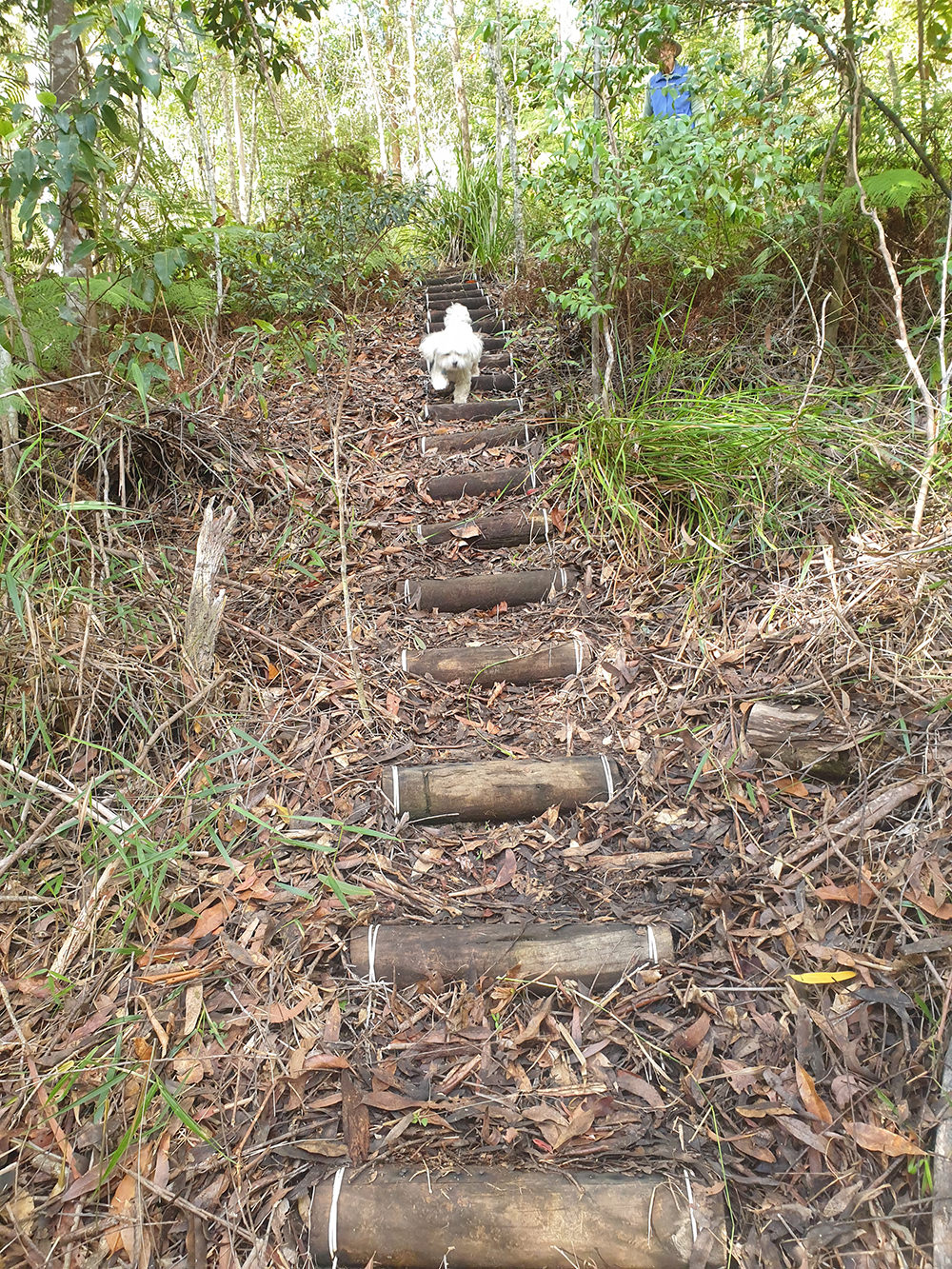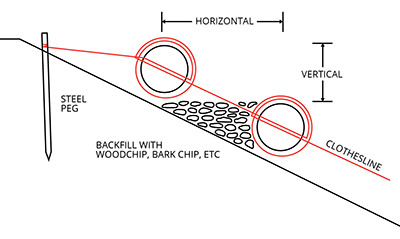
The eruption of Mount St Helens in Washington State in 1980 created a scree slope on the side of the mountain. When I visited some years later, tourists were able to climb the mountain via an ingenious staircase, which was like a rope ladder laid on top of the scree. On return, I adapted this system to use on my properties and have constructed many such staircases which have worked well for decades. It is suitable for any steep slope, like a creek bank or the side of a gully.
This type of staircase has many advantages over a more conventional one. It is much easier, cheaper and faster to construct and is very stable and long lasting. As it requires no digging, it leaves the ground intact.
Materials
- Round treated timber “treads” 100 mm diameter. Cut to 480mm minimum length. Treated pine poles are usually sold in 2.4 and 3m lengths.
- Plastic coated clothesline with multifilament nylon core. This is sold in 30m lengths.
- Two steel 10mm pegs about 200mm long.
- Woodchip or leaf litter or similar.

Method
- Clear the area to be traversed of sticks and branches.
- Cut the treads to length (minimum480mm).
- Drill a 10mm hole about 25mm from each end of the tread.
- Drive two steel pegs in the top of the slope at the same distance apart as the holes in the treads. Leave about 30mm of the peg out of the ground.
- Cut a length of clothesline six times as long as the length of the staircase. Wrap the middle of the clothesline around the two pegs a few times at ground level (leaving the clothesline intact).
- Thread the clothesline through each end of the first tread, wind it right around the tread (one and a half turns) and thread it through again (see diagram).
- Repeat with the next tread.
- Use a spirit level and steel tape to ensure that the horizontal distance between treads, plus twice the vertical distance (see diagram), is 600-650mm (this is an architectural formula).
- Continue to the bottom of the slope tread by tread using the same formula.
- If you run out of clothesline, add more with a reef knot.
- Backfill the treads with woodchip or leaf litter.
The pegs at the top of the slope will prevent the staircase from slipping downhill. The vertical and horizontal formulas ensure that the staircase will be easy to walk up and down.
Article and photos by Trevor Sauer
Land for Wildlife member
Flaxton, Sunshine Coast
